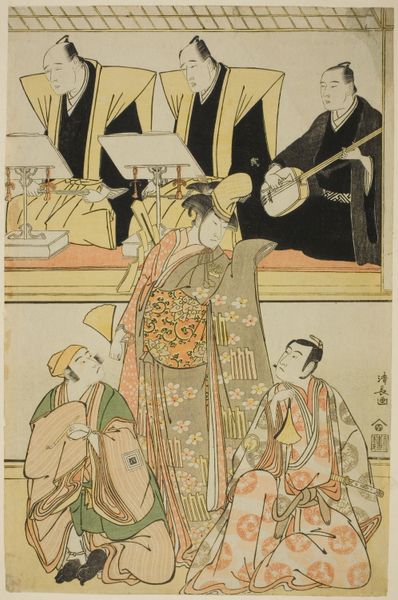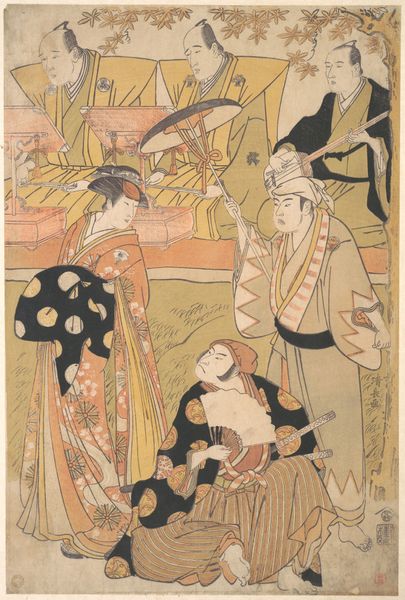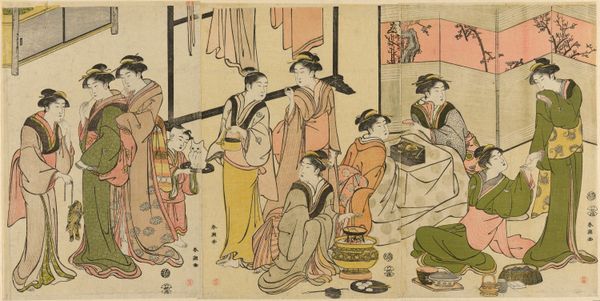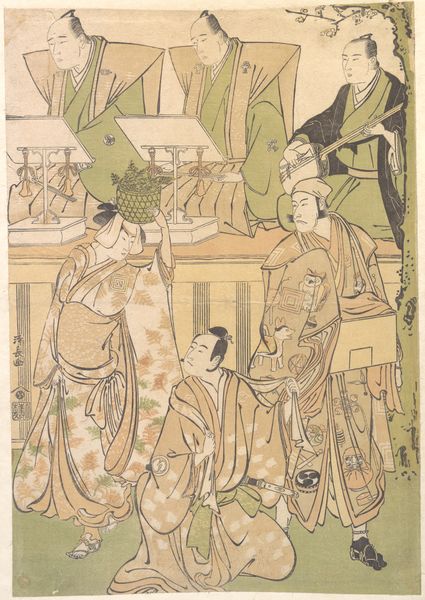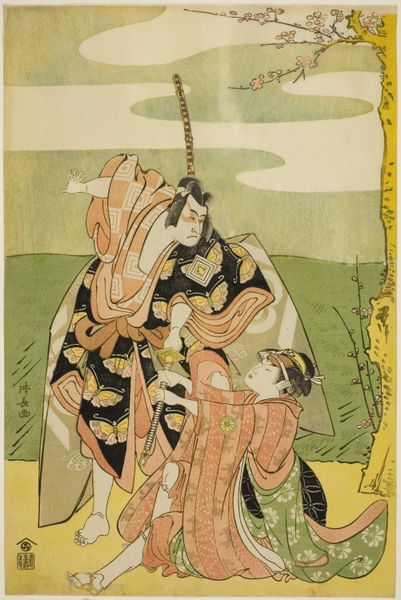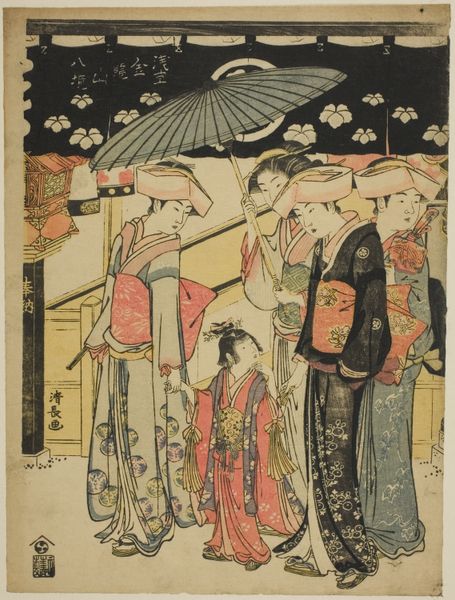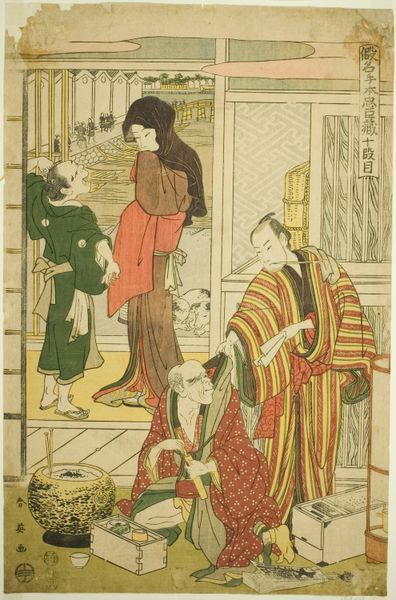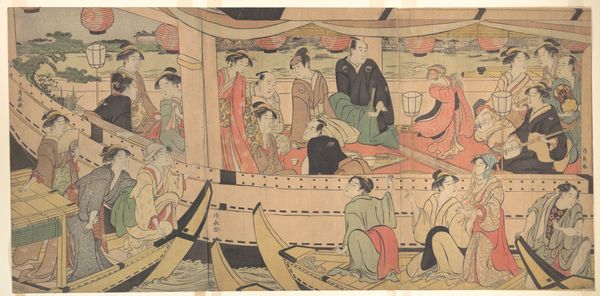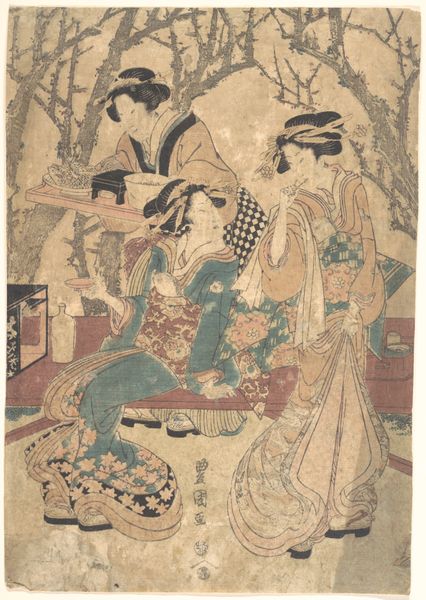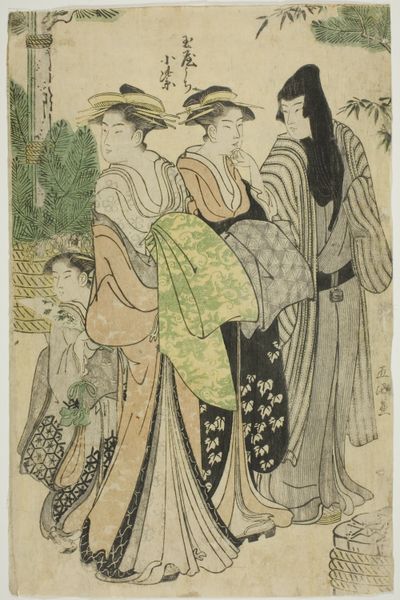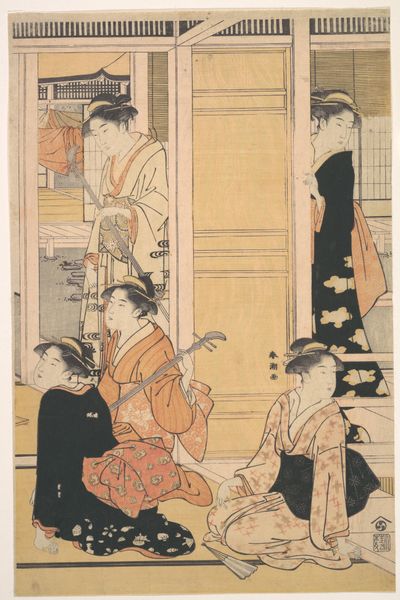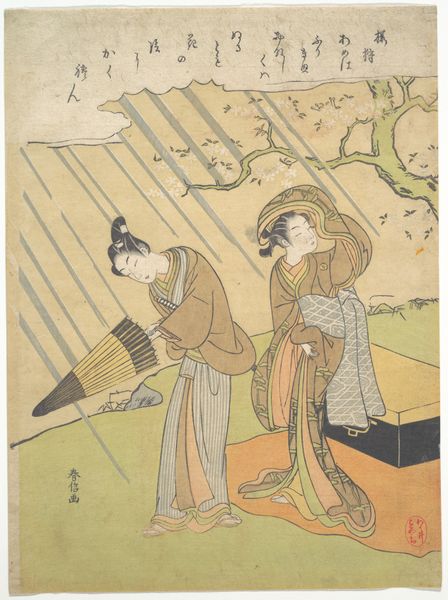
The Actor Nakamura Nakazo I as the Shirabyoshi Katsuragi, Matsumoto Koshiro IV as the monk Meigetsubo, and Otani Hiroji III as the monk Izayoibo, in the play "Edoganoko Musume Dojoji," performed at the Ichimura Theater in the eighth month, 1783 1783
0:00
0:00
print, woodblock-print
# print
#
asian-art
#
ukiyo-e
#
woodblock-print
#
genre-painting
Dimensions: 39.2 × 26.1 cm
Copyright: Public Domain
Curator: Well, here we have Torii Kiyonaga’s woodblock print from 1783. It’s entitled "The Actor Nakamura Nakazo I as the Shirabyoshi Katsuragi, Matsumoto Koshiro IV as the monk Meigetsubo, and Otani Hiroji III as the monk Izayoibo, in the play 'Edoganoko Musume Dojoji.'" It depicts a scene from a Kabuki performance. Editor: It’s beautiful. I'm immediately drawn to the textiles; look at the incredible patterns and layering in the central figure's costume. You can practically feel the weight of the fabric, a beautiful display of craft. Curator: The Kabuki theater had quite an influence on art during the Edo period. These actor prints, known as yakusha-e, became incredibly popular. They served as both publicity and as collectibles. The floating world aesthetic very much tied to consumer culture. Editor: The Ukiyo-e prints really showcase how labor and artistry could merge. Someone had to carve those blocks, apply the inks… and then the societal aspect – prints circulated among various social classes to reflect taste in art. Did their accessibility give them some subversive potential, influencing tastes and societal opinions beyond elite circles? Curator: Absolutely, yakusha-e prints brought the glamorous, sometimes scandalous, world of Kabuki to a wider audience, standardizing tastes in fashion, and popularizing specific narratives and actors, which reflects an emergent culture of celebrity fandom. There’s also an interesting relationship with gender and cross-dressing inherent in Kabuki performance and how it challenged social norms. Editor: What I find compelling is how seemingly simple the means were – woodblocks, inks, paper. These images acted as critical instruments to portray ideas within the urban population of Edo at the time. Curator: Indeed, thinking about the sociopolitical situation while understanding what went into these prints adds more layers. Editor: For sure. It just deepens my appreciation for how these historical pieces speak to craftsmanship, and its part of a much wider cultural moment. Curator: It has been truly illuminating to delve deeper into Kiyonaga's print today.
Comments
No comments
Be the first to comment and join the conversation on the ultimate creative platform.

